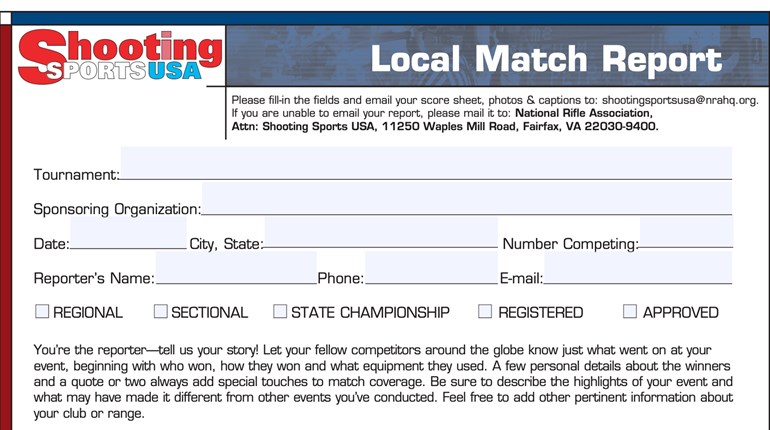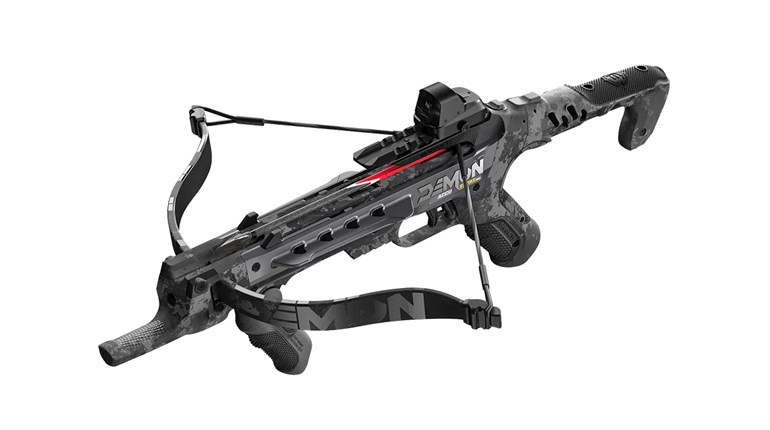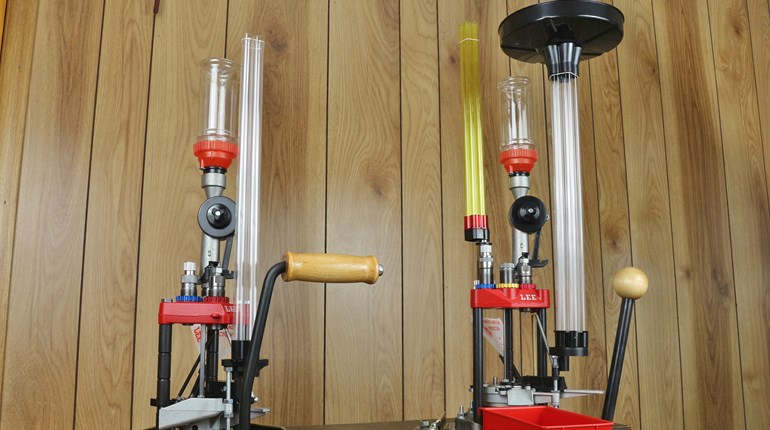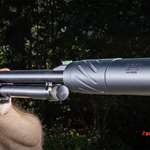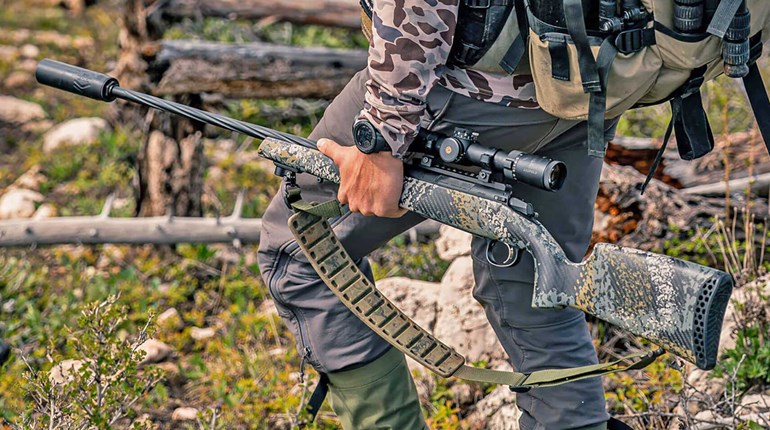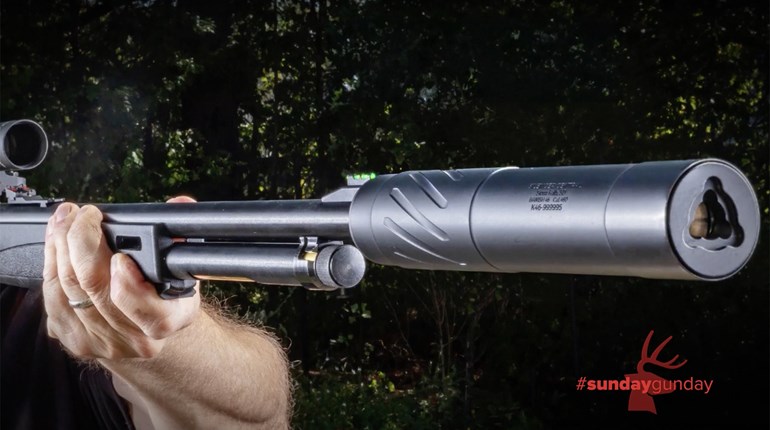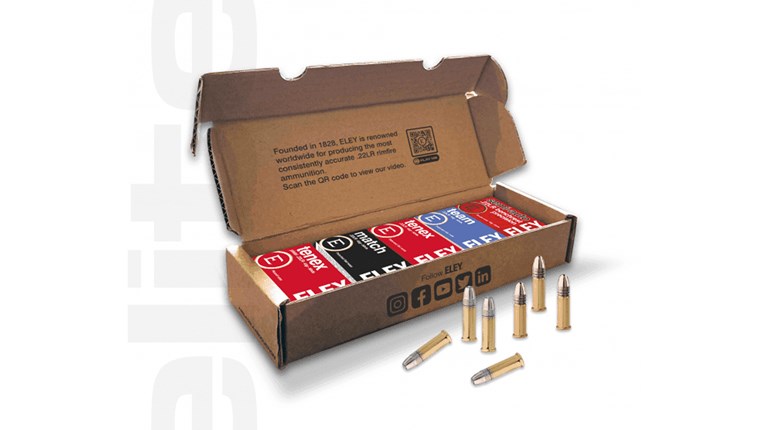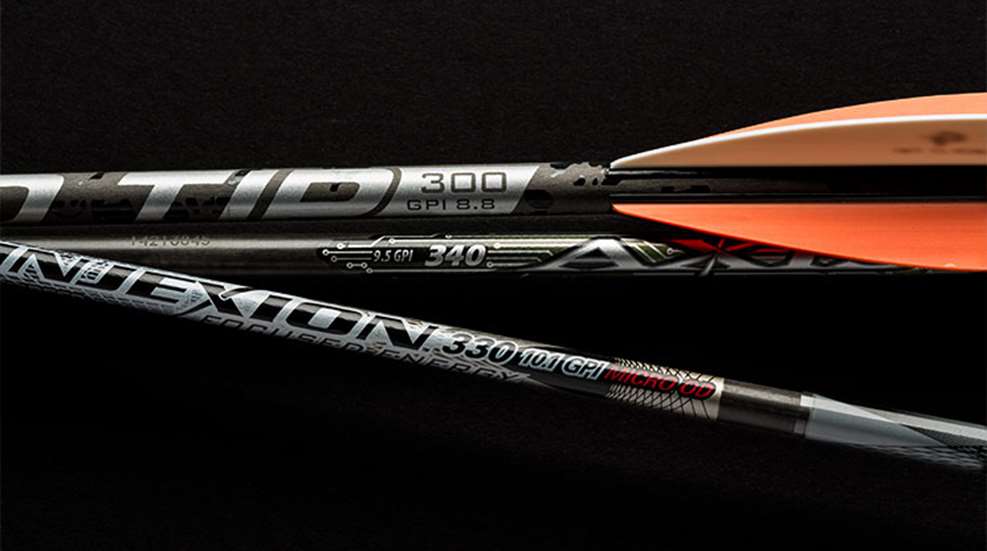
Picking an arrow has grown increasingly confusing in the carbon age. Five important specifications dictate quality and utility, including spine and spine concentricity, straightness, matched weight and grain-per-inch ratings. But what does it all mean? And what is gained by spending an additional $50-$75 for a dozen arrows? Knowing the answers will help you choose the best arrow for your hunting needs.
Spine
Arrow spine, also known as deflection, relates how shafts resist bending. The spec is determined by setting a shaft across a 28-inch span, hanging a 2-pound weight from its middle and recording resulting flex. A deeper bend equals a “lighter” spine; less bend means a “stiffer” spine. Deflection is indicated in fractions of an inch (.500, .400, .340, .300, lightest to stiffest). Based on empirical data arrow manufacturers create charts accurately predicting spine needs for particular bow/arrow dynamics. Reliable tuning and accuracy is impossible without proper arrow spine.
Easton and Beman stick to actual measured deflection when listing spine. Proprietary systems cause more confusion, such as Carbon Express’ “backward” 450/350/250 ratings where stiffer spines are given larger numbers, Gold Tip’s 3555/5575/7595 draw-weight span system and color-coded schemes. Seek actual spec-sheet deflections to avoid confusion between arrow brands.
Hand-in-hand is spine concentricity around an arrow’s circumference. Since few of us own the equipment necessary to confirm such information, we must take manufacturer claims at face value. Sticking with proven brands is the best insurance.
Straightness
Published straightness tolerances state no arrow within a given dozen falls outside the specified specs. Common straightness tolerances include +/- .001 (very straight) to +/- .008 (not so straight). All carbon arrow shafts originate from common mandrels. Best-quality and so-so specs are determined through laser sorting. Fewer shafts come off mandrels with near-perfect specs and demand remains high, so they are priced accordingly.
In truth, few bowhunters shoot well enough to notice a difference between .001 and .006 straightness, especially at intimate whitetail ranges. Any shaft with specs out to +/- .006 inch is generally straight enough for hunting with fixed-blade broadheads. Cheaper shafts that aren’t as straight are ideal for punishing through stump shooting or small-game hunting when paired with more aerodynamic points. Still, the straightest shafts inspire confidence when you know you own the best. And in bowhunting, confidence is priceless.
Individual Weight
Individual weight refers to the weight of each shaft. It’s usually indicated in grains per inch (gpi). This allows a bowhunter to choose an arrow that best serves performance needs. For instance, light 6-8 gpi arrows provide added speed when hunting light-framed game at longer ranges or during unmarked-range 3-D shooting (though they often result in increased shot noise and touchier tuning). Heavy 11-14 gpi arrows result in quieter shots, deeper penetration and more shooting forgiveness. A middle-ground compromise of 8.5-10 gpi provides a balance of speed, penetration and durability.
Matched Weight
Matched weight is altogether different, and besides spine, it’s likely most important to repeatable accuracy given the constant of gravity. This is represented by numbers such as +/- .5 grain (premier shafts) to 1-2 grains (average). It indicates extreme weight spread within a given dozen shafts—not an entire arrow model. So when buying new arrows, even if they’re the same model from the same maker, odds are they’ll have a slightly different average weight than your previous dozen.













